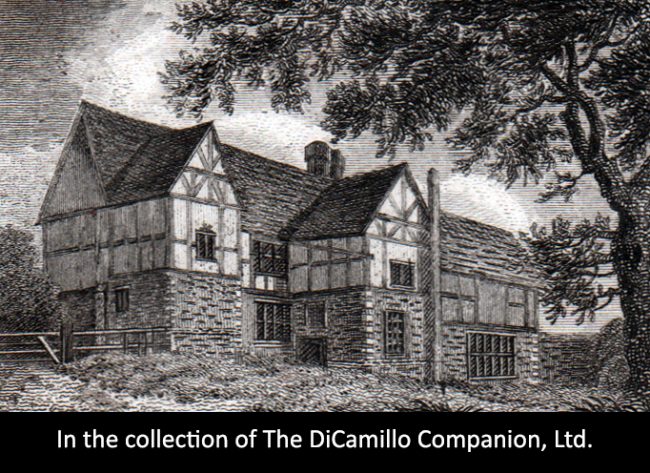
The House from a 19th century engraving
House & Family History: The Abbey of St. Mary and St. Thomas the Martyr, the formal name of Lesnes Abbey, was founded by Richard de Lucy, chief justiciar of England, in 1178 for the Augustinian Canons. De Lucy was involved in the murder of Thomas à Becket and it’s been suggested that he built the Abbey as penance for his part in the killing of the archbishop. In 1179 de Lucy resigned as chief justiciar and retired to the Abbey, where he died three months later; he was buried in the chapter house. The Abbey was closed by Cardinal Wolsey in 1524; it was later one of the first monasteries to be formally dissolved (in 1534) during the Dissolution of the Monasteries. All of the monastic buildings were demolished, except the abbot’s lodging, which was turned into a country house (it was this house that was demolished in 1844). Henry Cooke acquired Lesnes Abbey in 1541; it then passed to Sir John Hippersley, who salvaged building materials, before selling the property in 1632 to Thomas Hawes of London, who bequeathed it to Christ's Hospital in 1633. Some of the stone is said to have been used in the construction of nearby Hall Place. London County Council purchased the site of the ruins in 1930, which were opened to the public as a park in 1931. Since 1986 Lesnes Abbey has been a property of the London Borough of Bexley. The ruins of the Abbey are today Grade II-listed.
Garden & Outbuildings: Part of the former Lesnes Estate is the Abbey Wood SSSI, a geological Site of Special Scientific Interest, an important site for early Tertiary fossils.
House Listed: Demolished
Park Listed: Listed
Past Seat / Home of: Henry Cooke, 16th century. Sir John Hippersley, 16th century. Thomas Hawes, 17th century.
Current Ownership Type: Government
Primary Current Ownership Use: Public Park
Ownership Details: Owned and operated as a public park by London Borough of Bexley.
House Open to Public: Yes
Historic Houses Member: No